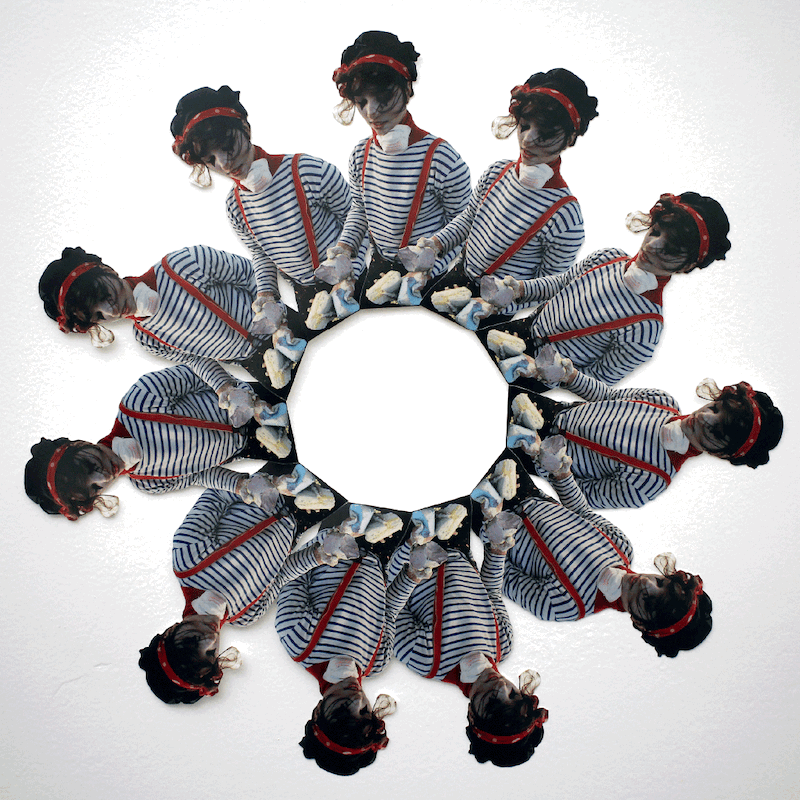Jemima Wyman: Camouflage or art
Jemima Wyman brings the contemporary backdrop of protest to the fore in her visual practice.
Words: Rex Butler
Undoubtedly, one of the decisive works of recent years is Mark Wallinger’s State Britain (2007), in which the artist took the cardboard signs of a long-term protester against the Iraq war camped outside British Parliament, remade them and put them inside Tate Britain. Wallinger comes as close as he can to recreating political protest inside the gallery, even to the extent of drawing the line within the exhibition that is the actual line that protesters are not allowed to cross because it is too close to Parliament.
But, of course, the line between art and real life is not so easily locatable, and we could say that it divides the work at every point. State Britain is both a work of art and a political protest, or maybe even to use the language of criticality that is so much part of contemporary art it is both a political protest and about political protest. After all – and it is obvious Wallinger wants us to notice this – they are not the original protester’s begrimed and hand-lettered signs but recreated by a team of assistants and now precious objects in the Tate’s collection.
For The National show at Carriageworks in Sydney, Los Angeles-based Jemima Wyman has made a huge stained glass window that is also a collage of images of contemporary protest: Occupy, the Zapatista Army, Pussy Riot, the ubiquitous Guy Fawkes masks from V for Vendetta. The whole thing sways and dances like a Busby Berkeley musical, making it hard to fix on any one part in particular. It forms a pattern, a fabric, to use a word Wyman wants us to think about a camouflage.
Protest as camouflage? What’s going on here? Of course, we have protesters in their masks and costumes, partly to disguise themselves and partly to identify themselves – and Wyman has made this a constant topic of her art, from the checks and paisley dress-ups of Putting On (2008) through to the face masks that are as much Scream as Anonymous of Tactical Frivolity (2015).
But there is more to it than that. For more than the protesters it is protest itself that becomes camouflage in Wyman’s work: the psychedelic pour paintings of Combat Drag (2008), the op wallpaper of The Will to Deceive (2010), the checkerboard fabric of Piecing Together Core Concerns (2012), the hanging curtain of Conjuring R adical Openness (2015). It is to suggest – the obvious reading – that civil unrest forms a constant backdrop to our contemporary world, an almost normal state of affairs. Everyday somebody is protesting against something. Protest becomes – even perhaps for the protesters themselves – more about the act of protest than what is being protested about. Hence the masks, the costumes, the play acting. Indeed, protest may even have become conformist, a form of socialisation – and in 2014 Wyman made for Brisbane’s Gallery of Modern Art’s Children’s Centre a work that got children to protest as a way of inducting them into the modern world.
But at the same time something else appears through the camouflage. For the question must be asked: what lies hidden beneath these protests? What do they all stand in for? Rather than simply doing away with the specificity of protest, camouflage also generalises it, unifies it, joins different outbreaks of it from around the world. A hidden commonality is revealed through the black of Occupy, the white of Tahrir Square and the red of Pussy Riot. There is something beneath the surface, an authentic grievance that can never be satisfied. Precisely Wyman’s patterns make us look deeper, for what has been covered over, even though we can never actually say what it is.
It is art that produces this division, this line between appearance and reality, the world and what it stands in for. It is not some specific grievance, a particular or nameable cause. It is not some thing in the world. Instead, like Wallinger’s State Britain, it divides the world from itself, makes us see a distinction between things and themselves. Art makes the world its own camouflage, its own poor substitute. Art speaks the truth of the world, which is that the world is only an appearance, that the world is its own appearance.
This article was originally published in Art Collector issue 80, April-June 2017









